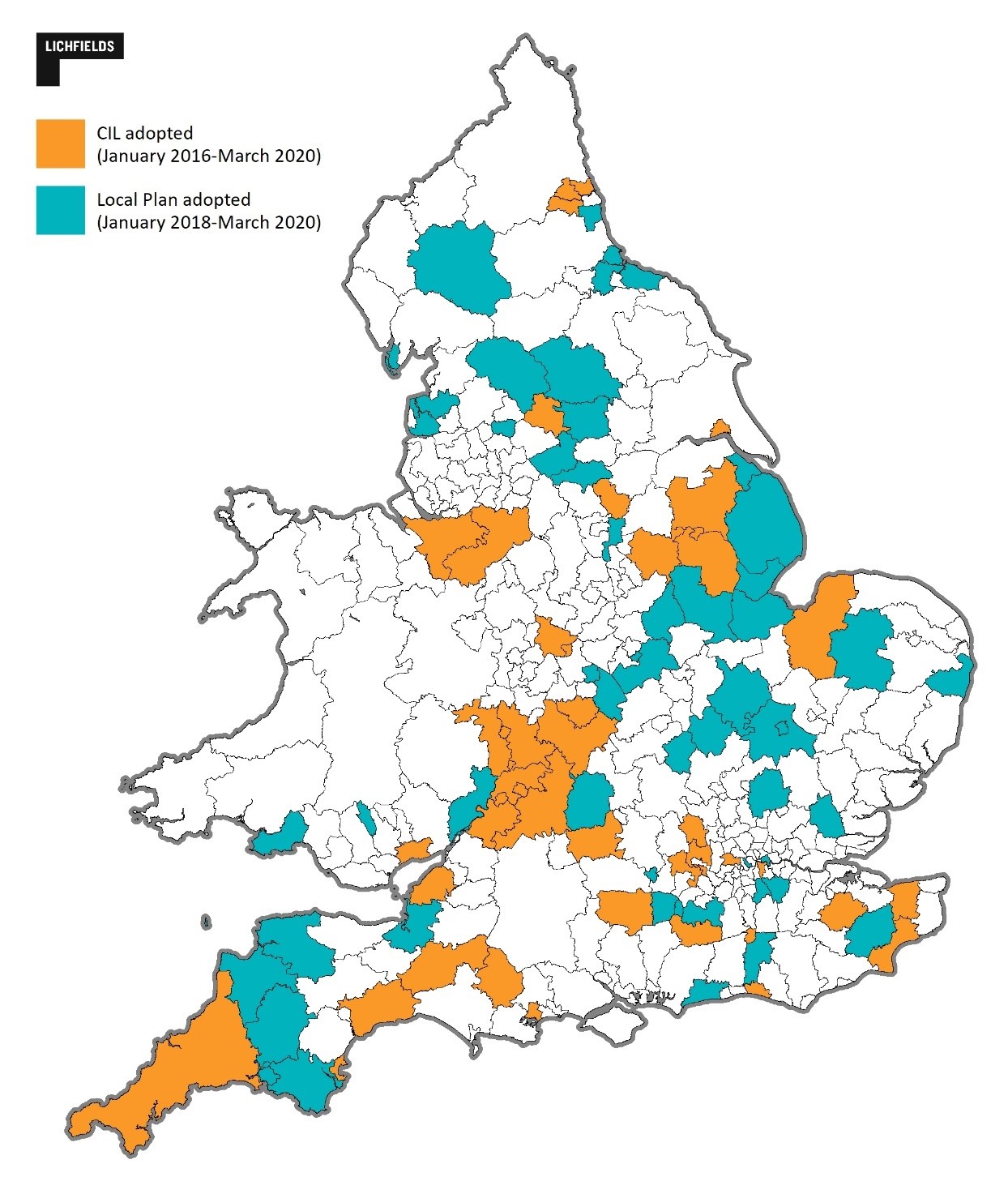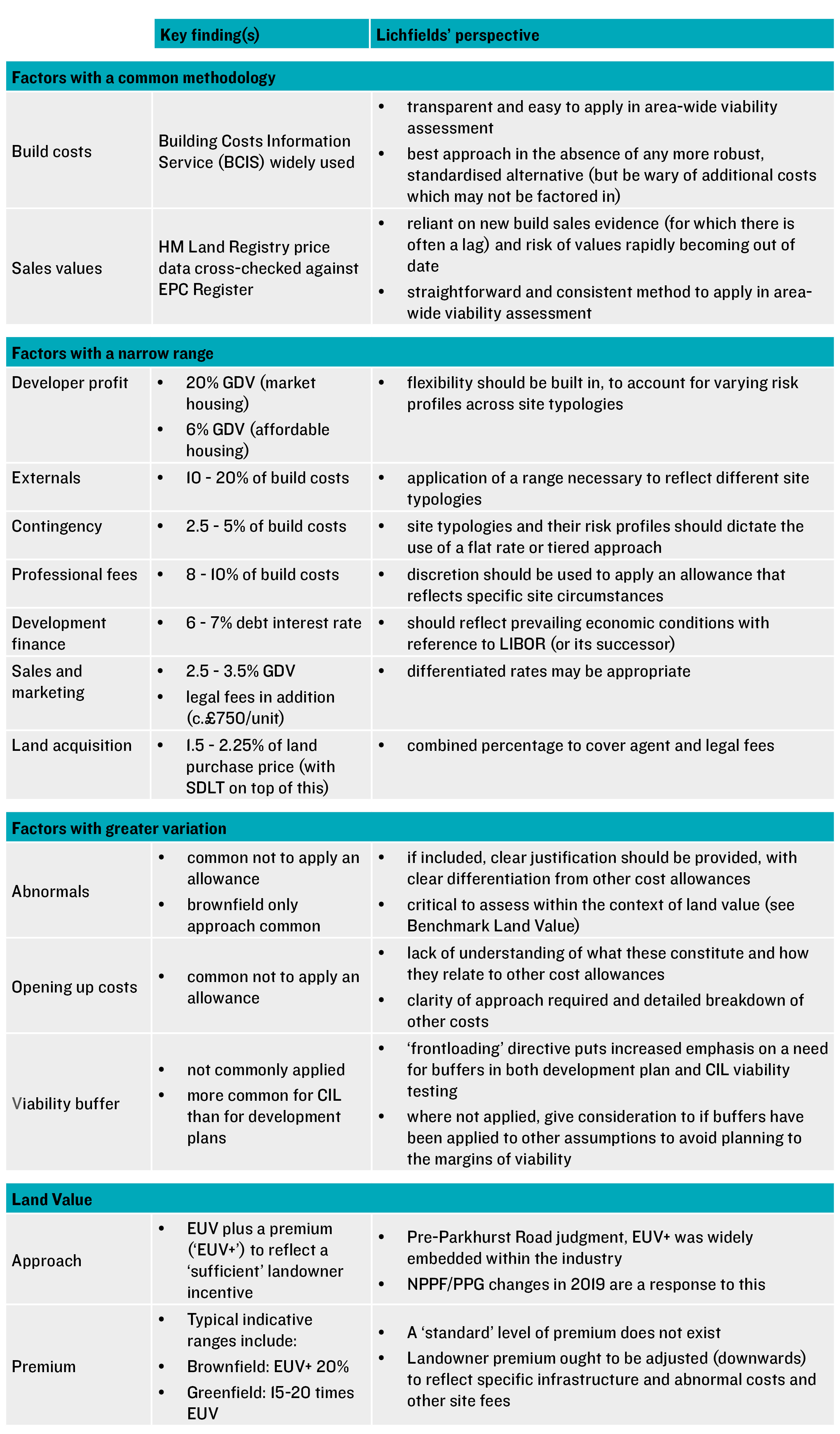The issue of development viability is becoming an increasingly important battleground in planning and plan-making. There are several reasons for this, not least the issue of rising costs. The Covid-19 surge in house prices notwithstanding, there remains the potentially longer-term problem for the sector to accommodate the rising cost of labour and materials as well as the need for adaptable and flexible housing to meet the requirements of an ageing population and of achieving ‘net zero’ targets.
2019 changes to the NPPF and related PPG further underlined the importance of viability. The changes point towards the ‘frontloading’ of viability assessment to the plan-making (rather than the decision-taking) stage and the greater requirements for the
standardisation of inputs that have evolved as a result. Perhaps one of the most important takeaways from the amended guidance is the following quotation:
“The price paid for land is not a relevant justification for failing to accord with relevant policies in the plan. Landowners and site purchasers should consider this when agreeing land transactions.” [Paragraph: 002 Reference ID: 10-002-20190509]
Developers are now required to engage early on viability issues – the option of negotiating at application stage is now no longer a realistic option unless ‘particular circumstances’ justify the need to. At Lichfields, we have questioned whether the practical implications of this approach could actually
disadvantage the smaller players in the market who will not necessarily have the same resource as volume builders at their disposal to absorb the costs associated with earlier engagement.
Two years on from the publication of changes to the NPPF and related PPG, there are still quite significant misunderstandings in the industry about the implications of the changes. Whilst relevant case law helps to provide further clarity on the interpretation of particular aspects of the guidance, we are still not much further on in terms of how to deal with issues of standardisation in viability assessment.
To this end, our forthcoming Insight (subscribe to Insights to get it sent to your email) aims to fill a gap by bringing together a comprehensive analysis of evidence submitted to local plan and Community Infrastructure Levy (CIL) examinations. It covers a total of 93 local authorities across England and in Wales, reflecting a broad coalescence of policy approach between the two.
Our findings therefore reflect the distillation of a large body of evidence on the assumptions and approaches used in undertaking viability assessments for housing development in a local plan context and for local plans (and CIL charging schedules) that were found sound at examination. In this way, we hope that the findings will be useful to a wide range of users and will assist in providing a broad framework for the standardisation on inputs/approaches.
Further detail can be found by reading the Insight, but overall, we distilled our findings down to three main areas:
- Factors with a common methodology;
- Factors with a narrow range of values/figures; and,
- Factors with a broader range of values/figures.
It is important to note that the above findings are intended to guide practitioners to ready-reckoners and ranges for which there has been broad coalescence based on a review of the evidence. They should not be used dogmatically, and it should be emphasised that such an approach cannot account for all eventualities – there will inevitably be specific circumstances that justify the application of alternative inputs.
How Lichfields can help
Whilst the issue may have traditionally been viewed as the exclusive realm of agents/valuers, changes to the NPPF/PPG mean that viability is now central to the plan making process and site deliverability. Viability is therefore now critical to planning policy and practice. In particular, the shift towards the standardisation of inputs allows a greater role for planners who can focus less on the assessment of individual input assumptions and concentrate more on how the issue dovetails with other planning considerations. This is perhaps also reflected in the recent update to the RICS guidance note on viability which directly responds to the changed planning context.
As a leading planning consultancy, we have a unique and deep understanding of the interface between viability and planning which others may not be able to offer. We have extensive experience of supporting clients at plan examinations on planning and more recently on viability issues.
Please
get in touch if you would like to discuss how we might be able to assist.
RICS (2021) Assessing viability in planning under the National Planning Policy Framework 2019 for England. Guidance Note England 1st edition, March 2021 https://www.rics.org/globalassets/rics-website/media/upholding-professional-standards/sector-standards/land/assessing-financial-viability_final.pdfR (Holborn Studios) v London Borough of Hackney(2020)





